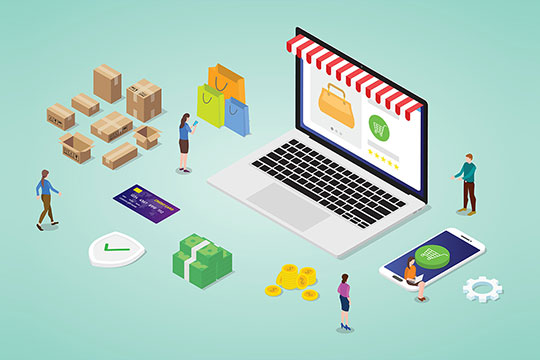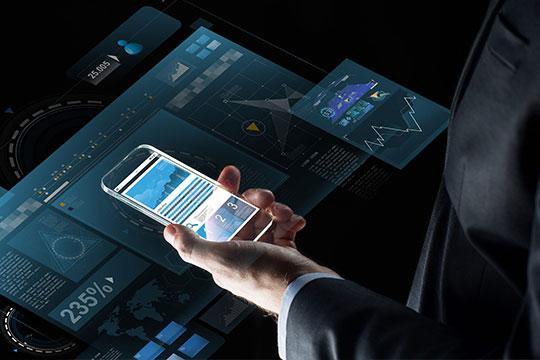Subscription-based mobile apps have become increasingly popular in recent years, as more and more consumers are looking for ways to access exclusive content, features, and services on-the-go. These apps often offer a free trial period, after which users must pay a recurring fee to continue using the app.
Here are the top 5 subscription-based mobile apps:
- Netflix: Netflix is a streaming service that offers a wide variety of TV shows, movies, and original content. Users can access the content for a monthly fee and can watch it on their mobile devices, tablets, and smart TVs. The app allows users to create multiple profiles, so everyone in the household can have their own personalized viewing experience.
- Spotify: Spotify is a music streaming service that offers a vast library of songs, albums, and playlists. Users can listen to music for free with ads, or they can upgrade to Spotify Premium for an ad-free listening experience and the ability to download music for offline listening. The app also offers a “Spotify for Artists” feature that allows artists to manage their profiles, track their listening data, and share their music with fans.
- Headspace: Headspace is a meditation and mindfulness app that offers guided meditations and mindfulness exercises. Users can start with a free 10-day trial, after which they must pay a monthly or annual fee to continue using the app. The app offers a wide range of guided meditations for different needs, such as stress relief, focus, and sleep.
- Duolingo: Duolingo is a language learning app that offers interactive lessons and exercises to help users learn new languages. Users can start with a free trial, after which they must pay a monthly or annual fee to continue using the app. The app offers lessons in over 20 languages, including Spanish, French, German, and Chinese.
- Calm: Calm is a mindfulness and meditation app that offers a wide range of guided meditations, sleep stories, and mindfulness exercises. Users can start with a free trial, after which they must pay a monthly or annual fee to continue using the app. The app also offers a “Calm Body” feature that offers yoga and stretching exercises to help users relax and unwind.
In conclusion, subscription-based mobile apps offer a wide range of features and services that can help users stay entertained, informed, and relaxed. Whether you’re looking for a streaming service, a music app, a meditation app, or a language learning app, there’s a subscription-based app out there that can meet your needs. It is important to note that before subscribing to any app, it is essential to have a clear understanding of what the app offers and the cost of the subscription.
Creating a subscription-based app can be a great way to generate recurring revenue for your business. In this blog post, we will discuss the steps you need to take in order to make your app subscription-based.
Step 1: Define your subscription model
The first step in creating a subscription-based app is to decide on the subscription model that you want to use. There are several different models to choose from, including:
- Free trial: This model allows users to try out your app for a limited period of time before they are required to pay for a subscription.
- Freemium: This model offers a basic version of your app for free, but users can upgrade to a paid version with additional features.
- Pay-per-use: This model charges users for each individual use of your app, rather than a flat monthly or annual fee.
- Subscription: This model charges users a flat monthly or annual fee for access to your app.
Step 2: Set up in-app purchases
Once you have decided on your subscription model, you will need to set up in-app purchases in order to start selling subscriptions. In-app purchases allow users to buy digital products or services within your app.
To set up in-app purchases, you will need to create an account with the app store (i.e. Apple App Store or Google Play Store) and configure your subscription products.
Step 3: Integrate a payment gateway
In order to process payments for your subscriptions, you will need to integrate a payment gateway into your app. A payment gateway is a service that securely processes credit card payments on behalf of merchants.
There are many different payment gateway options to choose from, including Stripe, PayPal, and Braintree. Each of these options has its own set of features and pricing plans, so it’s important to research and compare them before making a decision.
Step 4: Implement a subscription management system
Once you have set up in-app purchases and integrated a payment gateway, you will need to implement a subscription management system in order to manage your subscribers. A subscription management system allows you to track and manage all of the subscriptions for your app, including:
- Subscription status
- Renewal dates
- Cancellations
- Refunds
Step 5: Test and launch
After you have completed all of the above steps, it’s time to test your app and make sure everything is working correctly. Make sure to test all of the functionality of your app, including the subscription process, in-app purchases, and payment gateway integration.
Once you are satisfied that everything is working correctly, it’s time to launch your app and start selling subscriptions.
In conclusion, creating a subscription-based app can be a great way to generate recurring revenue for your business. By following the steps outlined in this blog post, you can easily create a subscription-based app that is easy to use, secure, and reliable.
Keep in mind that, this is a general guide and depending on the complexity and specifics of your app, you may need to consult with experts like us to help guide you through the process.
How Ndimension Labs can help your business?
Ndimension Labs brings years of experience in multiple IT services to ensure profit-driven results for your business. We have got you covered with professional in-house teams for web development, app design and development, online marketing, and tech support.
We bring in multiple engagement models so that you can pick the right one for your firm and start scaling your processes in a hassle-free manner.
Want to know more about how Ndimension Labs can help you grow faster? Get in touch with us, and experts at Ndimension Labs will walk you through the best opportunities.











